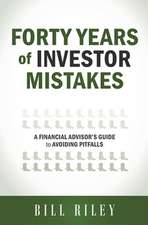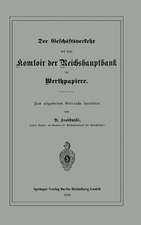The 1772–73 British Credit Crisis: Palgrave Studies in the History of Finance
Autor Paul Kosmetatosen Limba Engleză Hardback – 3 apr 2018
This book uses a variety of previously unpublished archival sources to question the bubble narrative usually associated with this crisis, and to identify the mechanisms of financial contagion that allowed the failure of a small private bank in London to cause rapid and severe distress throughout the 18th century financial system. It re-examines the short and turbulent career of the Ayr Bank, and concludes that itsfailure was the result of cavalier liability management akin to that of Northern Rock in 2007, rather than the poor asset quality alleged in existing literature. It furthermore argues that the Bank of England’s prompt efforts to contain the crisis are evidence of a Lender of Last Resort in action, some thirty years before the classical formulation of the concept by Henry Thornton.
| Toate formatele și edițiile | Preț | Express |
|---|---|---|
| Paperback (1) | 781.62 lei 43-57 zile | |
| Springer International Publishing – 8 ian 2019 | 781.62 lei 43-57 zile | |
| Hardback (1) | 792.03 lei 43-57 zile | |
| Springer International Publishing – 3 apr 2018 | 792.03 lei 43-57 zile |
Din seria Palgrave Studies in the History of Finance
-
 Preț: 362.10 lei
Preț: 362.10 lei - 9%
 Preț: 764.93 lei
Preț: 764.93 lei - 18%
 Preț: 737.26 lei
Preț: 737.26 lei - 15%
 Preț: 712.22 lei
Preț: 712.22 lei - 15%
 Preț: 522.89 lei
Preț: 522.89 lei -
 Preț: 451.65 lei
Preț: 451.65 lei - 18%
 Preț: 726.37 lei
Preț: 726.37 lei - 15%
 Preț: 701.06 lei
Preț: 701.06 lei - 15%
 Preț: 530.25 lei
Preț: 530.25 lei - 15%
 Preț: 637.59 lei
Preț: 637.59 lei - 18%
 Preț: 1108.51 lei
Preț: 1108.51 lei - 18%
 Preț: 1114.21 lei
Preț: 1114.21 lei - 18%
 Preț: 1006.55 lei
Preț: 1006.55 lei - 18%
 Preț: 726.06 lei
Preț: 726.06 lei - 18%
 Preț: 786.84 lei
Preț: 786.84 lei - 18%
 Preț: 724.94 lei
Preț: 724.94 lei - 15%
 Preț: 702.54 lei
Preț: 702.54 lei - 18%
 Preț: 723.69 lei
Preț: 723.69 lei -
 Preț: 388.72 lei
Preț: 388.72 lei - 18%
 Preț: 782.72 lei
Preț: 782.72 lei - 15%
 Preț: 699.77 lei
Preț: 699.77 lei - 9%
 Preț: 920.30 lei
Preț: 920.30 lei - 15%
 Preț: 711.89 lei
Preț: 711.89 lei -
 Preț: 383.12 lei
Preț: 383.12 lei - 18%
 Preț: 891.33 lei
Preț: 891.33 lei - 18%
 Preț: 958.25 lei
Preț: 958.25 lei - 18%
 Preț: 1008.28 lei
Preț: 1008.28 lei -
 Preț: 445.88 lei
Preț: 445.88 lei - 18%
 Preț: 1113.58 lei
Preț: 1113.58 lei - 15%
 Preț: 646.75 lei
Preț: 646.75 lei - 15%
 Preț: 702.05 lei
Preț: 702.05 lei -
 Preț: 450.11 lei
Preț: 450.11 lei - 18%
 Preț: 794.39 lei
Preț: 794.39 lei - 18%
 Preț: 948.29 lei
Preț: 948.29 lei - 15%
 Preț: 697.97 lei
Preț: 697.97 lei - 18%
 Preț: 728.74 lei
Preț: 728.74 lei - 15%
 Preț: 642.83 lei
Preț: 642.83 lei
Preț: 792.03 lei
Preț vechi: 965.88 lei
-18% Nou
Puncte Express: 1188
Preț estimativ în valută:
151.56€ • 158.64$ • 126.14£
151.56€ • 158.64$ • 126.14£
Carte tipărită la comandă
Livrare economică 31 martie-14 aprilie
Preluare comenzi: 021 569.72.76
Specificații
ISBN-13: 9783319709079
ISBN-10: 3319709070
Pagini: 264
Ilustrații: XXIV, 334 p. 45 illus., 9 illus. in color.
Dimensiuni: 148 x 210 mm
Greutate: 0.73 kg
Ediția:1st ed. 2018
Editura: Springer International Publishing
Colecția Palgrave Macmillan
Seria Palgrave Studies in the History of Finance
Locul publicării:Cham, Switzerland
ISBN-10: 3319709070
Pagini: 264
Ilustrații: XXIV, 334 p. 45 illus., 9 illus. in color.
Dimensiuni: 148 x 210 mm
Greutate: 0.73 kg
Ediția:1st ed. 2018
Editura: Springer International Publishing
Colecția Palgrave Macmillan
Seria Palgrave Studies in the History of Finance
Locul publicării:Cham, Switzerland
Cuprins
1. ‘A Year of Confusion, Dismay, and Distress’: The 1772–73 Financial Crisis and Its Potential Significance.- 2. A Minsky Bubble? Economic Growth and the Financial Sector in 1763–72.- 3.‘Roguery’, ‘Stupidity’, and Permissive Regulation: Asset Speculation and Speculative Projects in 1763–72.- 4. Propagation and Containment: Financial Contagion and the Lender of Last Resort in 1772–73.- 5. Impact and Resolution.- 6. Conclusion.
Notă biografică
Paul Kosmetatos is Lecturer for International Economic History at the University of Edinburgh. Prior to embarking in his academic career in History, he studied Materials Science and Engineering and spent a decade trading financial derivatives in the City of London.
Textul de pe ultima copertă
Nowadays remembered mostly through Adam Smith’s references to the short-lived Ayr Bank in the Wealth of Nations, the 1772-3 financial crisis was an important historical episode in its own right, taking place during a pivotal period in the development of financial capitalism and coinciding with the start of the traditional industrialisation narrative. It was also one of the earliest purely financial crises occurring in peacetime, and its progress showed an impressive geographical reach, involving England, Scotland, the Netherlands and the North American colonies.
This book uses a variety of previously unpublished archival sources to question the bubble narrative usually associated with this crisis, and to identify the mechanisms of financial contagion that allowed the failure of a small private bank in London to cause rapid and severe distress throughout the 18th century financial system. It re-examines the short and turbulent career of the Ayr Bank, and concludes that its failure was the result of cavalier liability management akin to that of Northern Rock in 2007, rather than the poor asset quality alleged in existing literature. It furthermore argues that the Bank of England’s prompt efforts to contain the crisis are evidence of a Lender of Last Resort in action, some thirty years before the classical formulation of the concept by Henry Thornton.
This book uses a variety of previously unpublished archival sources to question the bubble narrative usually associated with this crisis, and to identify the mechanisms of financial contagion that allowed the failure of a small private bank in London to cause rapid and severe distress throughout the 18th century financial system. It re-examines the short and turbulent career of the Ayr Bank, and concludes that its failure was the result of cavalier liability management akin to that of Northern Rock in 2007, rather than the poor asset quality alleged in existing literature. It furthermore argues that the Bank of England’s prompt efforts to contain the crisis are evidence of a Lender of Last Resort in action, some thirty years before the classical formulation of the concept by Henry Thornton.
Caracteristici
Covers an important historical episode that has not been covered before in its entirety Charts the short but turbulent career of the Ayr Bank Showcases the development of crisis containment policies and the recognition that many modern financial contagion mechanisms were already well in place in the mid-18th century


















